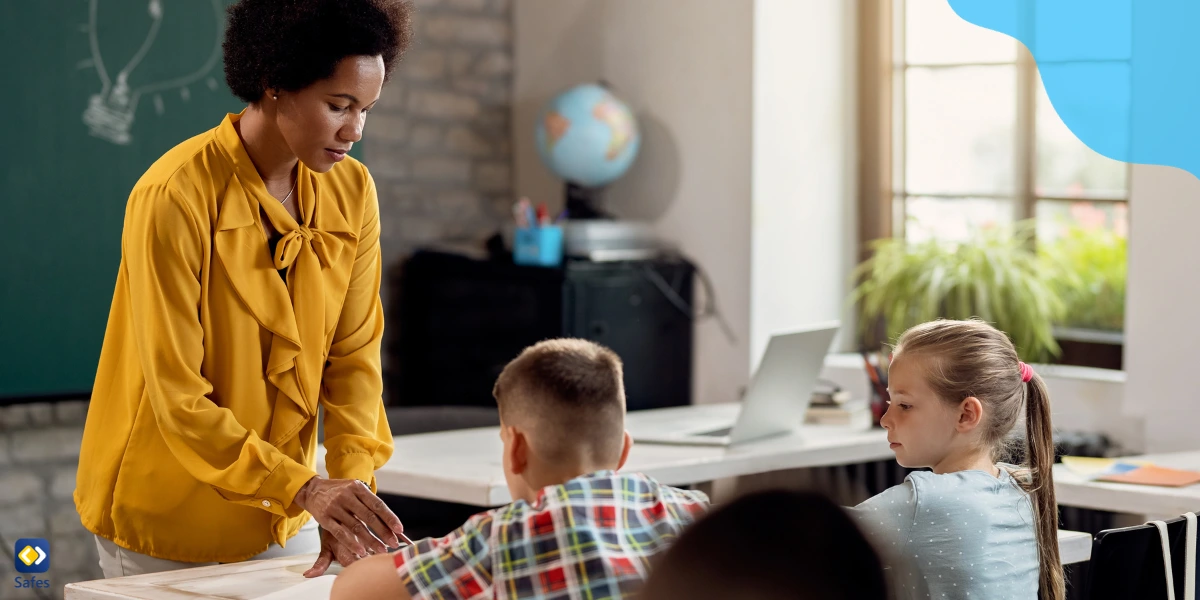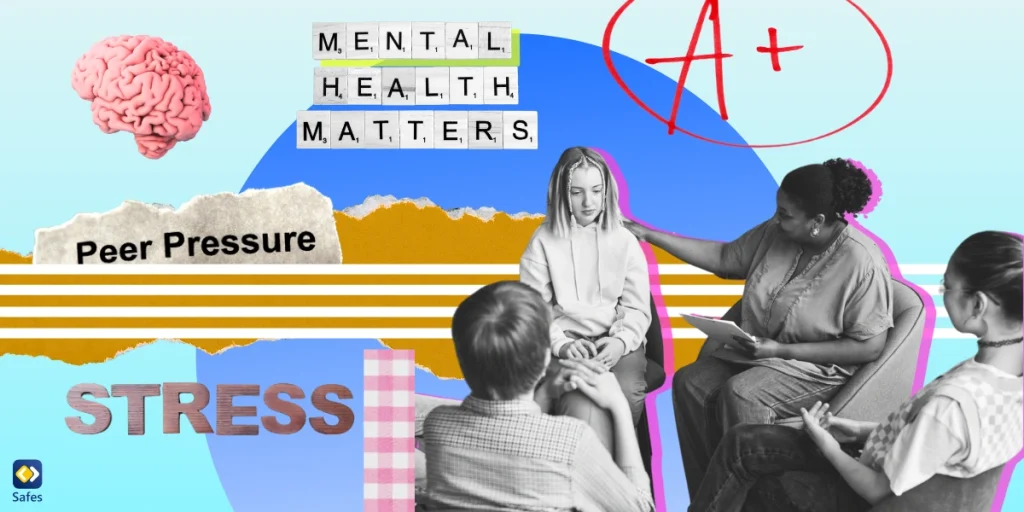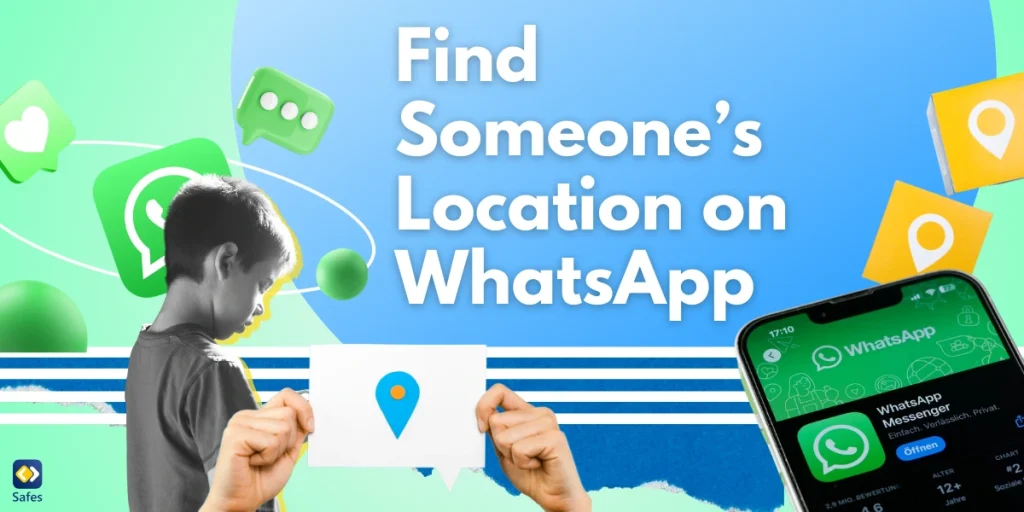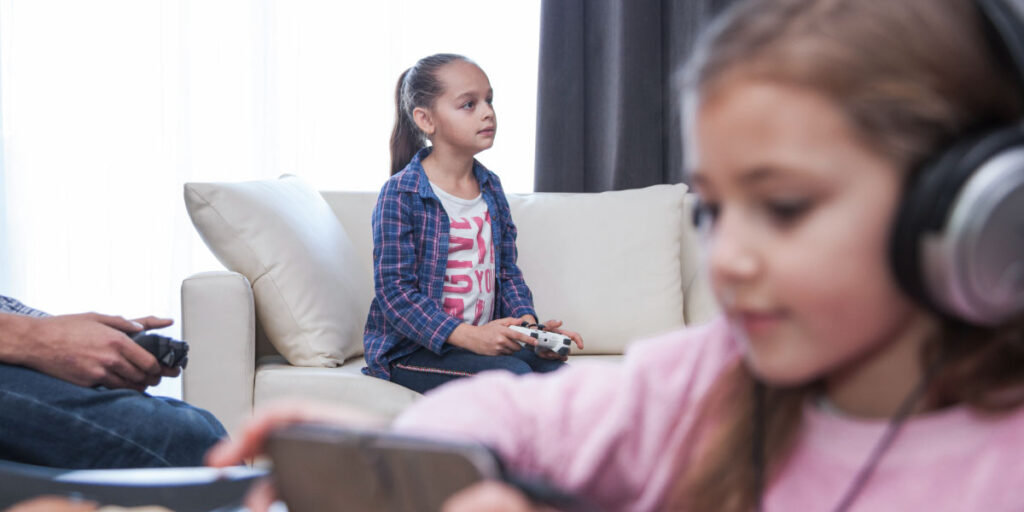Navigating the school years can be like steering a boat through uncharted waters. That’s why we think mental health check-ins for students are essential. Here, we’ll explore the critical role mental health plays in a teen’s life and provide practical guidance for educators.
Download and Start Your Free Trial of the Safes Parental Control App
From the bustling hallways of high school to the quiet moments in the classrooms, understanding and supporting your teen’s mental health is key to helping them thrive. So, let’s equip ourselves with strategies to ensure our teens not only navigate these waters but sail confidently into their future.
Understanding Teen Mental Health Challenges
The Teenage years are filled with twists and turns of high school and middle school experiences. During these formative years, mental health challenges often surface, subtly or overtly, impacting youngsters profoundly.
High school students, especially, find themselves at a crossroads where academic pressure mounts like never before. The never-ending pursuit of grades, coupled with the desire to excel in extracurriculars, often becomes a heavy burden. The high school experience, unfortunately, is all about outperforming, which can lead to stress, anxiety, and even burnout.
Middle school isn’t exempt from these pressures either. For them, the challenges morph into an intricate dance of navigating social dynamics while grappling with an increasingly demanding academic workload. This period is marked by a quest for identity and belonging, making peer pressure a significant influencer. The desire to fit in or stand out can influence a young mind immensely, affecting their mental well-being.
In essence, the journey through middle and high school is a critical time for mental and emotional development. Recognizing and addressing these challenges is key to fostering a healthier, more resilient generation.
Rising Mental Health Concerns Among Adolescents
In an extensive 13-year study involving over 230,000 U.S. adolescents, researchers unearthed significant changes in the mental health landscape of teenagers. Notably, the demand for mental health care among adolescent girls has seen a marked increase, indicative of a broader escalation in mental health concerns across the youth population. Strikingly, the prevalence of internalizing problems such as anxiety, depression, and suicidal thoughts has risen by 19.7%, with suicidal ideations alone skyrocketing from 48.3% in 2005-2006 to an alarming 57.8% in 2017-2018.
This shift in mental health challenges is also reflected in the changing patterns of mental health service utilization. The use of outpatient mental health services has surged by 15.8%, while reliance on traditional school counseling services has declined by 7.5%. These statistics not only highlight the growing complexity of mental health issues among adolescents but also underscore the critical necessity of regular mental health check-ins. They reveal a clear need for adaptive, accessible mental health support systems, emphasizing the importance of early detection and intervention in addressing the mental health needs of today’s youth.
The Role of Mental Health Check-Ins
Mental health checks serve as a crucial early detection system, highlighting subtle changes in a teen’s mental landscape. These checks are not about poking around but engaging with sensitivity and awareness. Regular, thoughtfully framed mental health check-in questions for students open doors to crucial conversations, allowing teachers to observe behavioral shifts that might signal deeper issues. Effective mental health checks involve crafting questions that foster open communication and trust, avoiding judgment or alarm.
The importance of these checks is supported by organizations like the National Institute of Mental Health, which emphasizes early identification of behavioral signs indicative of mental health concerns. The National Alliance on Mental Illness also highlights the significance of early intervention in bridging the gap between symptom onset and receiving help. According to this organization, around half of the lifelong mental conditions begin before the age of 14.
An Educator’s Guide to Effective Check-Ins
As an educator, building a strong connection with your students is essential for fostering a supportive learning environment. Unsure about the right questions to ask? Here’s a guide to help you start meaningful conversations.
Initiating Conversations in the Classroom
Engaging with your students on a personal level can be rewarding. Consider these icebreaker questions:
- Exploring Personal Interests: “What’s your favorite book?” This question not only sparks interest in their hobbies but can also lead to discussions about themes and characters, offering insights into their thoughts and feelings.
- Emotional Awareness: “How did you feel about today’s class discussion?” This encourages students to express their emotions and thoughts, allowing you to understand their perspectives better.
- Creative Icebreaker: “If you could have any superpower, what would it be?” This fun question can reveal a lot about their aspirations and creativity, while keeping the mood light.
Asking open-ended yet specific questions lets students guide the conversation to areas they are comfortable with, promoting a more open and trusting classroom environment.

Incorporating Check-Ins into Classroom Routines
Regular check-ins can become a seamless part of your classroom routine:
- Morning Greetings: Start the day by asking, “What are you looking forward to today?” This sets a positive tone and shows that you care about their day-to-day experiences.
- End-of-Day Reflections: Before the day ends, encourage students to reflect by asking, “What did you learn today that excited you?” or “Was there anything challenging for you today?” These questions promote reflection and sharing of both positive and challenging experiences.
Fostering Open Dialogue and Strong Relationships
Building a relationship based on trust and open communication is crucial:
- Active Listening: Show genuine interest and empathy in their concerns. This builds trust and encourages them to share more openly.
- Encouraging Independence: While guiding them, respect their need to make decisions and learn from experiences.
- Sharing Experiences: Occasionally share your own challenges. This demonstrates vulnerability and relatability, fostering a stronger connection.
- Engaging in Shared Activities: Collaborative projects or group activities can strengthen relationships and build a sense of community in the classroom.
Promoting Open Dialogue and Building Relationships
Trust and open communication are pillars of any strong relationship, especially with your teen:
- Building Trust through Listening: Actively listen to your teen’s concerns without judgment. This approach fosters trust and encourages them to open up about their experiences.
- Empowering Independence: Respect their need for independence. It’s a balancing act between guiding them and allowing them to make their own decisions, even if they stumble along the way.
- Modeling Vulnerability: Share your own challenges and uncertainties. Admitting your own imperfections and mistakes can make you appear more relatable and trustworthy to your teen.
Incorporating these strategies into your classrooms can pave the way for a relationship built on mutual respect, understanding, and genuine connection. Remember, effective communication is a two-way street that requires ongoing effort and adaptation as your teen grows and evolves.
Activities and Resources for Support
Supporting your teen’s mental health is a blend of personal activities and professional resources. Besides self-care activities for kids, you can combine personal and professional strategies for supporting students’ mental health:
- Interactive Activities: Organize classroom activities that promote teamwork and joy, like group projects or creative assignments.
- Encouraging Personal Expression: Activities like creating a class gratitude board can foster a positive environment.
- Nature-Based Learning: If possible, include outdoor activities or nature-related projects in your curriculum to promote well-being.
- Encouraging Journaling: Suggest journaling for students to express themselves, offering cognitive and emotional benefits.
In terms of professional support, it’s crucial to have resources at hand:
- Counseling Referrals: Have contact information for student counseling services readily available.
- Educational Websites: Utilize websites that provide resources and information on student well-being.
- Community Engagement: Encourage participation in community programs focused on youth mental health and wellness.
By incorporating these strategies into your teaching, you can create a supportive and understanding environment that facilitates not just academic learning, but also personal growth and emotional well-being for your students.

Trio Education: Digital Wellness in Education
Trio Education is an innovative digital management tool designed to enhance students’ mental health in educational settings. By monitoring and limiting screen time, this app helps educators address challenges related to excessive digital exposure. It effectively filters harmful web content, safeguarding students from online risks that can impact their mental well-being. Additionally, Trio Education encourages responsible digital habits through structured device use and facilitates open discussions about online behavior. The app also includes real-time monitoring features, ensuring student safety within the school environment. Offering a balanced approach to technology use, Trio Education is an essential tool for creating a positive and safe digital climate in classrooms.
Final Thoughts
Simply asking “How are you feeling today?” can open doors to deeper connections. Empowering your students starts with understanding how they feel, what they enjoy learning, and their favorite part of their school day. Engage with them, be it about a favorite subject or just a casual chat about their day. This not only nurtures a positive learning environment but also fortifies your bond, letting your students know they’re heard and valued.
Your Child’s Online Safety Starts Here
Every parent today needs a solution to manage screen time and keep their child safe online.
Without the right tools, digital risks and excessive screen time can impact children's well-being. Safes helps parents set healthy boundaries, monitor activity, and protect kids from online dangers—all with an easy-to-use app.
Take control of your child’s digital world. Learn more about Safes or download the app to start your free trial today!




